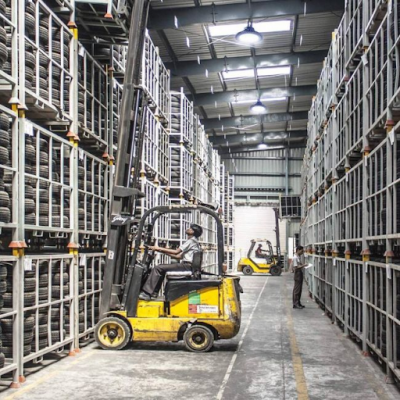
Did you know that palletizing robots are the future of material handling? If not, you’re in for a treat! This article will look closely at what palletizing robots are and why they’re so important. Plus, we’ll explore some benefits that robotic palletizing can bring to your business.
Keep reading to learn more about this exciting technology.
How do palletizing robots work?
A palletizing robot is a computer-controlled machine used to place products onto pallets efficiently. There are many benefits to using palletizing robots over traditional methods such as forklifts or cranes. For starters, palletizing robots can work much faster than human workers.
In addition, they never get tired and can work for long hours without breaks. Furthermore, palletizing robots can be programmed to perform specific tasks, which helps to improve accuracy and consistency. Finally, using palletizing robots can help to reduce labor costs and improve safety in the workplace.
Why palletizing robots?
Palletizing robots are becoming increasingly popular in material handling applications for many reasons:
- They can significantly improve productivity by reducing the time needed to complete tasks.
- They can help to improve product quality by ensuring that products are appropriately aligned and securely placed on pallets.
- They can reduce worker injuries by removing the need for workers to lift and carry heavy products.
- They can help to reduce overall costs by eliminating the need for specialized equipment and labor.
As a result, palletizing robots offer several advantages for businesses looking to improve their material handling operations.
What industries benefit from the use of palletizing robots?
Robotics palletizing offers many advantages over manual labor when efficiently and effectively stacking products onto pallets. Not only are robotics able to work faster than humans, but they can also achieve a higher level of precision, which is essential for ensuring that products are securely stacked and do not fall off during transport.
Robotics palletizing is used in various industries, including food and beverage, pharmaceuticals, and e-commerce. In the food and beverage industry, robots are often used for packing fresh produce, as they can handle delicate items without damaging them.
In the pharmaceutical industry, robots are used for packing medications and medical devices, as they can ensure that products are not damaged or contaminated. And in the e-commerce industry, robots are increasingly being used for packing orders, as they can help to improve the speed and accuracy of order fulfillment.
Are there any potential drawbacks to using palletizing robots?
In any business or operation, it is essential to consider all potential risks before making a change. This is especially true when considering adding new technology, such as palletizing robots. While robots can offer many advantages, such as increased efficiency and reduced labor costs, there are also potential drawbacks that should be considered.
One potential drawback is the cost of the robots themselves. Palletizing robots can be expensive, and businesses may need to purchase multiple units to achieve the desired level of productivity.
Additionally, businesses will need to provide ongoing maintenance and support for the robots. Another potential drawback is that robots can malfunction or break down, which can cause production delays. Finally, some businesses may be concerned about employees being replaced by robots.
While palletizing robots can offer many benefits, it is essential to consider all potential risks before deciding.
How much do palletizing robots cost?
When considering a palletizing robot for your company or organization, weighing the cost against the potential benefits is crucial. Palletizing robots can range in price from $20,000 to $100,000, depending on the size and feature of the unit. While this may seem like a significant investment, it is crucial to consider the potential savings in labor costs.
In many cases, a single palletizing robot can do the work of several employees, leading to a significant decrease in labor expenses. In addition, palletizing robots can operate around the clock, allowing for greater efficiency and reduced downtime. When taken into account, the initial cost of a palletizing robot may be offset by long-term savings in labor and increased productivity. As a result, it is essential to carefully consider the cost of a palletizing robot before deciding for your company or organization.
All in all
Palletizing robots are the future of material handling for many reasons. Their ability to automate and speed up the palletizing process makes them an attractive option for companies looking to improve their production lines.
Additionally, palletizing robots can work with various materials, making them versatile and valuable in some industries. Finally, they are cost-effective and can save companies money in the long run.
Interesting Related Article: “The Biggest Maintenance Challenges Faced by Manufacturing Companies“
